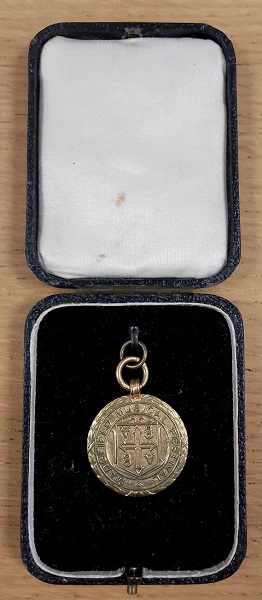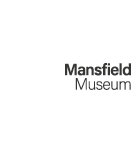Music, Medals and Minting
Music, Medals and Minting
Discovering the Story of Mansfield Musical Festival
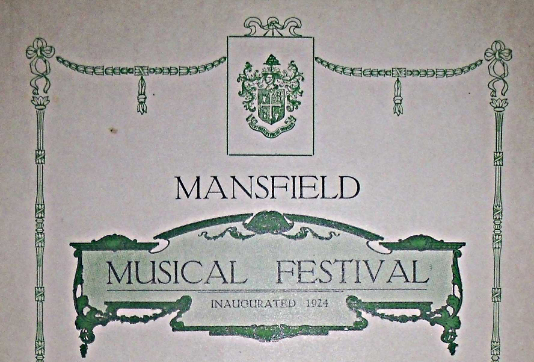
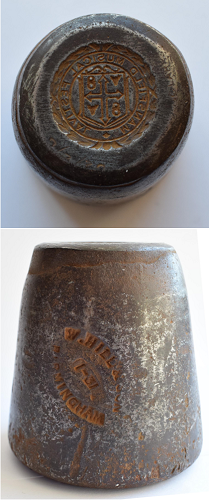
Sometimes, when working in the museum stores, we find artefacts which unlock snippets of history. This strange object had been recorded as a stamp. It’s about 8cm tall, and very heavy, as it’s made of solid steel. One end is rounded, while the other is flat, and is engraved with a design in reverse. It is, in fact, a very particular kind of ‘stamp’ – it’s a coining die for making medals.
In the past, all coins were minted by hand. The designs for the coin were engraved, in reverse, onto the faces of a pair of coining dies. One die was held steady in a block, with a blank disc of metal placed on top. The second die was lined up above that, to form a sort of sandwich of dies, with the metal disc in the middle. The top die was then hit with a hammer, and the force of the blow caused the designs to be stamped into the metal disk (the right way round). Other similar items, like tokens and medallions, were made in the same way.
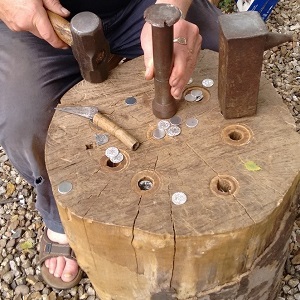

Experimental archaeologist Dave Greenhalgh minting coins using dies, blank discs of silver, and a hammer
In the 17th century a new technology was invented to mint coins using a machine. This was expensive, however, so was only used when large numbers of objects needed to be produced. The design on this die shows that it was used to make medals for the Mansfield Musical Festival. Only a few of these would be needed each year, so it was more cost effective to make them by hand.
Elsewhere in the collection we have an example of a medal from the festival, and the design matches the one on the face of the coining die! It shows the old coat of arms for Mansfield Borough – a shield with a cross on it, decorated with a stag’s head in two quarters, and a twist of cotton in the other two. The shield is surrounded by a circle which reads “MANSFIELD MUSICAL FESTIVAL”, and there is an outer border of laurel leaves. The medal is blank on the other side, so there would be no need for engraving on the other coining die and it could just be a smooth surface.
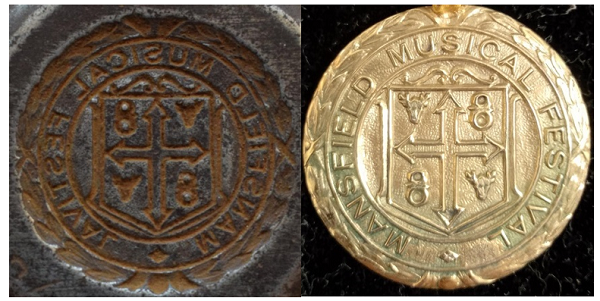
Mansfield Musical Festival was an annual event, started in 1924. Newspaper cuttings show that the event included competitions in a wide range of musical categories. There were events for adults, and for children, both performing solo and in groups. They included singing as well as playing instruments. It was clearly a popular event, although I'm not sure what today's doctors would make of the assertion reported in the 1927 edition of The Science and Art of Mining:
At the Mansfield Musical Festival Canon H. L. Marsh (Vicar of Mansfield) said : "Long experience has taught me that coal and voice go together. What the special qualities of coal dust may be I don't know. I don't suppose it is possible to find a finer quality of vocal tone anywhere than in North Notts., unless it be in some other coalfield."
Our gold medal was awarded to Hilda Peach for one of the singing competitions in 1933.
The festival was held each year, through the Second World War and into the 1950s. Early in that decade people started referring to it as the “Mansfield Music Festival” (rather than “musical” festival), and by 1959 this seems to have been the name which was always used. This coining die, therefore, was most likely made in the 1920s, and used for about 30 years. It's a particularly tangible piece of the history of this Mansfield institution!
Anja Thompson-Rohde, Collections and Interpretation Officer
